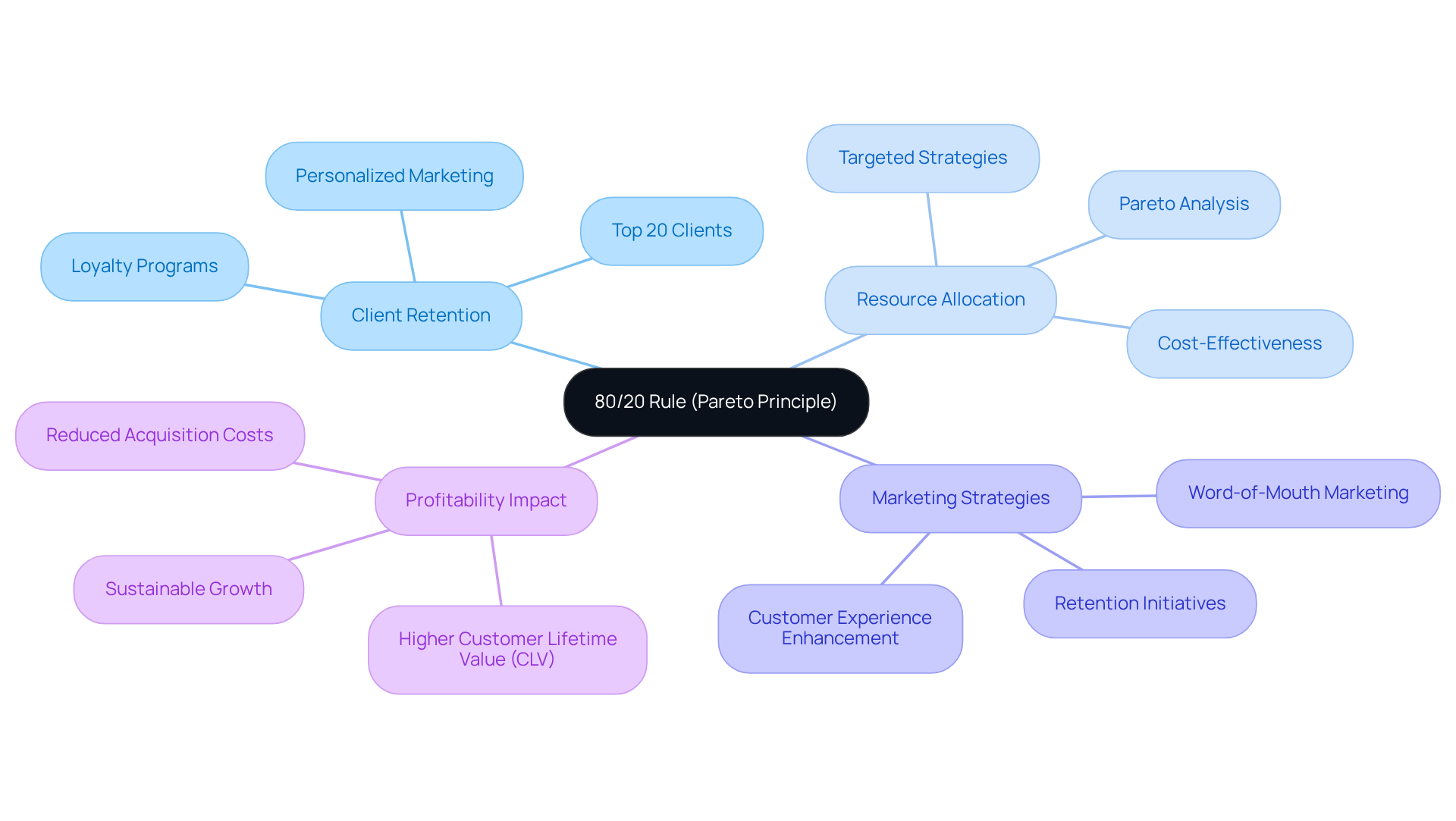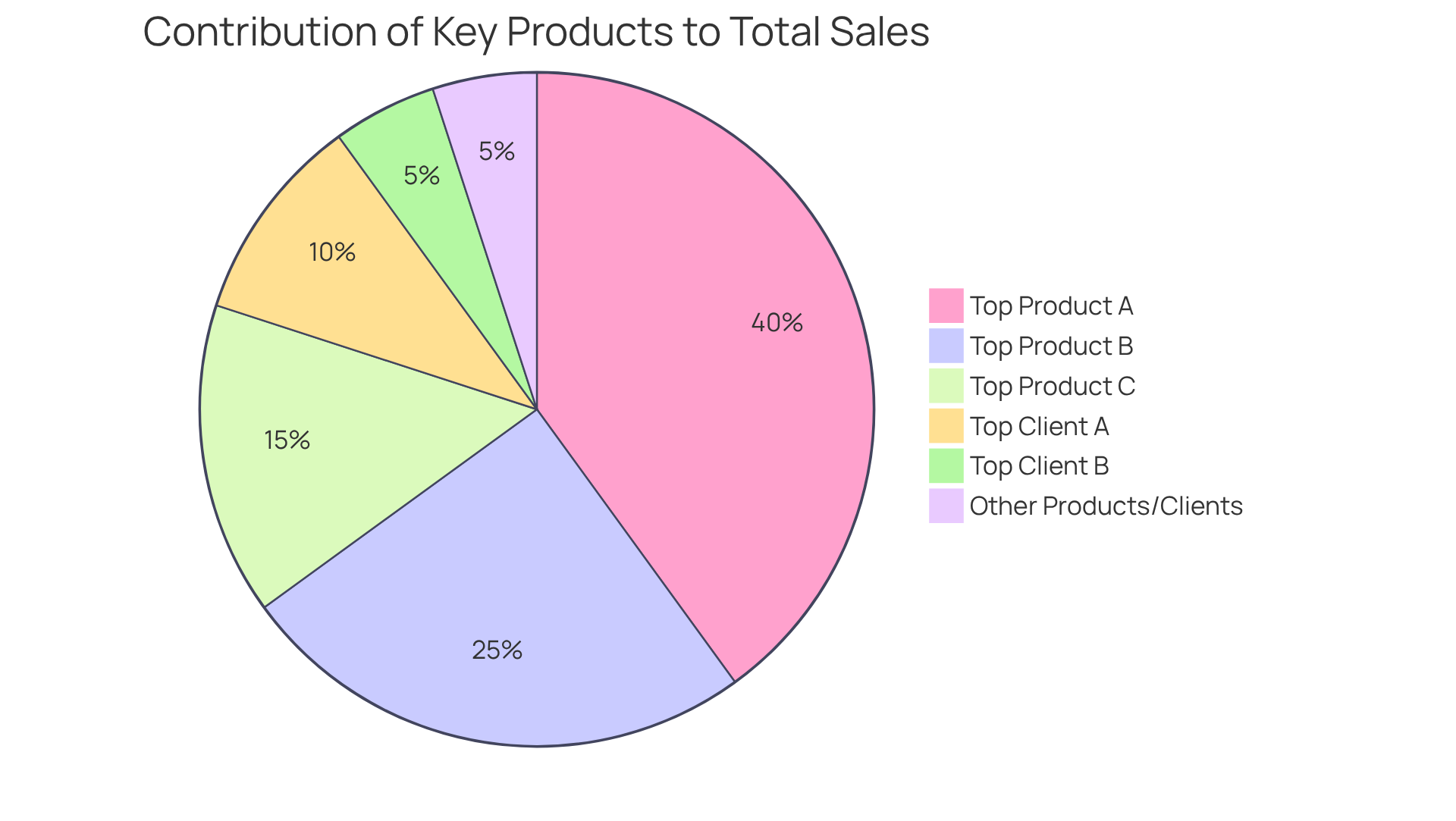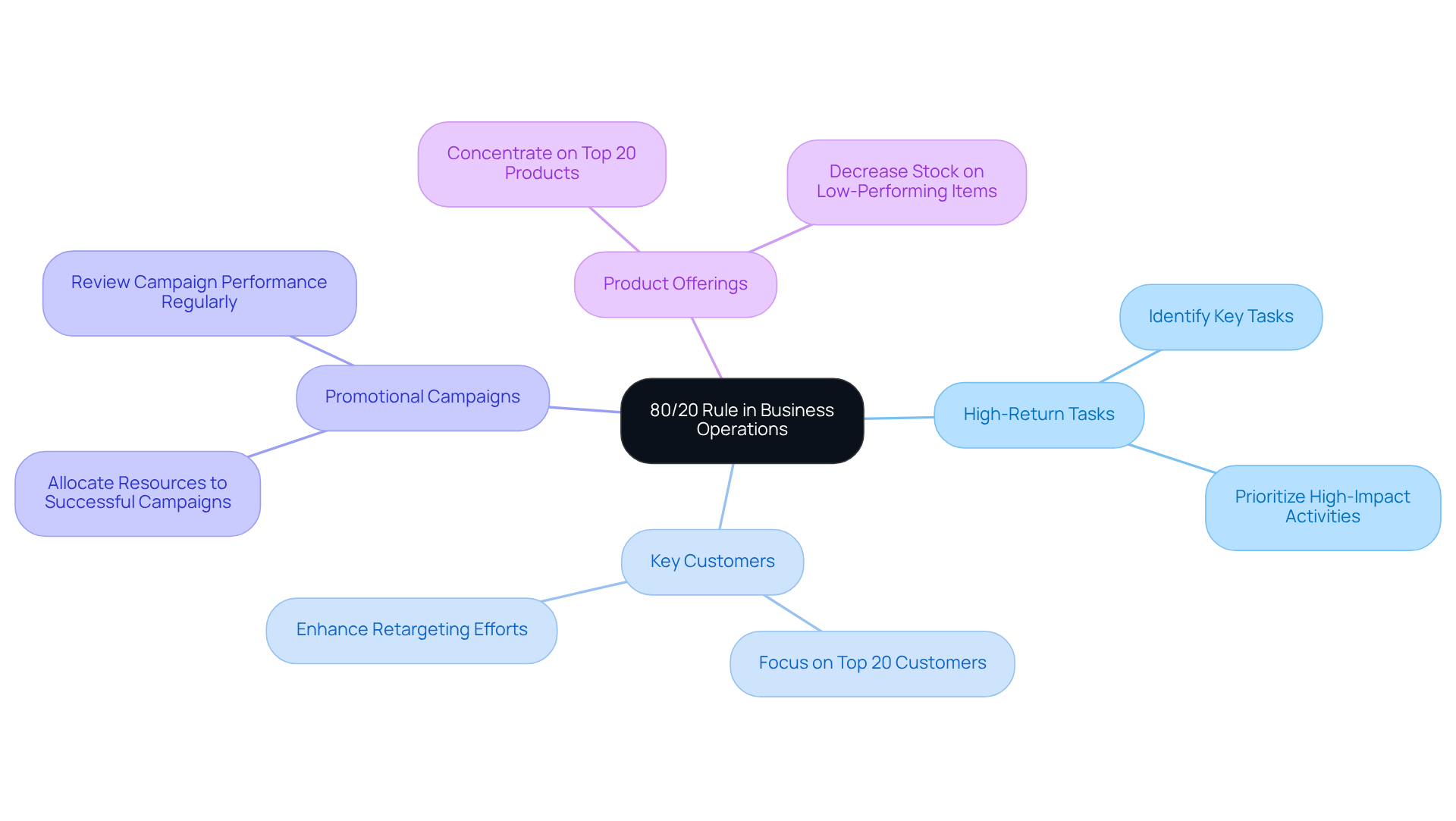
Overview
The 80/20 rule, also known as the Pareto Principle, stands as a pivotal strategy for enhancing profitability in direct-to-consumer (DTC) brands. By concentrating efforts on the vital 20% of clients, products, or marketing initiatives that yield 80% of profits, brands can unlock substantial financial growth. This principle is not merely theoretical; it is rooted in practical application.
Prioritizing high-impact areas is essential. Implementing targeted retention strategies allows brands to amplify customer lifetime value, streamline resource allocation, and ultimately drive sustainable revenue growth.
The evidence is clear: brands that embrace this focused approach are better positioned to thrive in a competitive landscape.
Introduction
The 80/20 rule stands as a powerful principle, asserting that a small fraction of inputs often leads to the majority of outputs. This concept holds significant potential for direct-to-consumer (DTC) brands eager to enhance profitability. By pinpointing which clients, products, or marketing strategies yield the most revenue, businesses can streamline their efforts and maximize returns. Yet, the challenge remains: effectively identifying and prioritizing these key profit drivers.
How can DTC brands leverage the 80/20 rule not just to survive, but to thrive in a competitive landscape?
Understand the 80/20 Rule and Its Impact on Profitability
The 80/20 rule, commonly referred to as the Pareto Principle, indicates that 80% of outcomes result from only 20% of causes. In the realm of DTC brands, the 80/20 rule illustrates that a small segment of clients, products, or marketing efforts often drives the majority of profits. Grasping this concept is crucial for pinpointing high-impact areas within your business.
For instance, if 80% of your revenue is generated by merely 20% of your clients, focusing on retaining and nurturing these essential clients can significantly boost profitability. Retaining existing clients is more cost-effective, as acquisition costs can be 5 to 7 times higher than retention expenses.
This section delves into how recognizing this disparity can facilitate smarter resource allocation and informed decision-making. By adopting targeted retention strategies, such as personalized marketing and loyalty programs, DTC companies can enhance customer lifetime value while simultaneously decreasing dependence on expensive customer acquisition methods.
Numerous successful DTC companies have leveraged the 80/20 rule to refine their operations, showcasing that a strategic emphasis on the top 20% can result in considerable revenue growth and enduring profitability. As Cohora aptly states, 'The brands that utilize the 80/20 rule aren’t just surviving; they’re thriving with sustainable, high-margin growth.

Identify Your Key Profit Drivers: Focus on the Vital Few
To identify your main profit contributors, begin by examining your sales data to determine which clients or items generate the highest revenue. Utilize tools such as customer segmentation and sales analysis to uncover significant patterns. For instance, it is often observed in the context of the 80/20 rule that 20% of products account for approximately 80% of total sales. Focus on these high-performing items by enhancing their visibility on your website and promoting them through targeted marketing campaigns.
Additionally, conducting client surveys can provide insights into the preferences and behaviors of your most profitable clients, enabling you to tailor your offerings to better meet their needs. This strategic focus not only enhances client satisfaction but also drives revenue growth, in line with the 80/20 rule, as evidenced by successful DTC companies that leverage sales data to identify and prioritize their top-selling items.
As a successful DTC brand owner noted, 'Focusing on our top products has allowed us to streamline our marketing efforts and significantly boost our profitability.' Furthermore, research indicates that improving client retention by just 5% can increase profits by 25% to 95%, underscoring the importance of concentrating on high-performing clients.

Implement the 80/20 Rule Across Your Business Operations
To effectively implement the 80/20 rule, start by identifying and prioritizing tasks and initiatives that provide the highest returns. Research indicates that the 80/20 rule reveals 80% of sales are generated by just 20% of customers, underscoring the importance of focusing on this key segment. If 20% of your promotional campaigns are responsible for generating 80% of your leads, following the 80/20 rule is crucial to allocate more resources to these successful campaigns. This strategic focus can significantly improve your promotional efficiency.
Additionally, streamline your product offerings by applying the 80/20 rule to concentrate on the top 20% of products that drive the majority of your sales. This may involve decreasing stock on low-performing items while enhancing the promotional efforts for your top sellers. Regularly reviewing your operations ensures that you consistently focus on the vital few areas that contribute most to your profitability.
As Anthony Bahr, Managing Director at Strategex, advises, 'If you’re going to spend time on something, spend it on what matters most.' By embracing this method, DTC companies, especially those with a minimum of 100,000 monthly website visitors and 2,000 purchases, can not only enhance their marketing effectiveness but also cultivate long-term loyalty and retention. Companies such as Hero Cosmetics have effectively applied these principles in their loyalty programs, boosting engagement and retention. By focusing on high-impact strategies, DTC brands can achieve sustainable growth and profitability.

Measure and Optimize: Evaluate the Impact of Your 80/20 Strategy
To effectively evaluate the impact of your 80/20 rule strategy, it is crucial to establish key performance indicators (KPIs) that align with your business objectives. Focus on monitoring essential metrics such as:
- Client retention rates, which typically range from 25-30% for strong performance
- Average order value (AOV), ideally at least 1.5 times the median item price
- Conversion rates, aiming for a benchmark of 2-5%
Implementing A/B testing allows you to experiment with various marketing tactics and product placements, enabling you to analyze which strategies yield the highest returns. Regularly reviewing your data helps identify trends and informs necessary adjustments to your strategy. By continuously measuring and optimizing your efforts—including tracking Customer Acquisition Cost (CAC) and Customer Lifetime Value (CLV)—and maintaining a CLV:CAC ratio between 3:1 and 4:1, you ensure your business remains agile and responsive to evolving market conditions, ultimately enhancing profitability and customer loyalty.

Conclusion
Mastering the 80/20 rule is crucial for enhancing profitability within DTC brands. Recognizing that a small segment of clients, products, or marketing efforts often generates the bulk of revenue enables brands to strategically focus their resources on these high-impact areas. This principle not only aids in identifying key profit drivers but also underscores the importance of client retention, allowing businesses to cultivate lasting relationships with their most valuable customers.
Throughout this discussion, various strategies have been highlighted, including the necessity of:
- Analyzing sales data to pinpoint top performers
- Implementing targeted marketing campaigns for these segments
The insights reveal that prioritizing the vital few can lead to significant revenue growth, as demonstrated by successful DTC brands that have adopted this approach. Furthermore, the importance of measuring key performance indicators to evaluate the effectiveness of the 80/20 strategy has been emphasized, ensuring brands remain agile and responsive to market changes.
Ultimately, embracing the 80/20 rule transcends mere tactics for immediate gains; it serves as a blueprint for sustainable growth and profitability. DTC brands are encouraged to delve into their data, refine their focus, and optimize their operations to unlock the full potential of this powerful principle. By doing so, they can not only thrive in a competitive landscape but also foster a loyal customer base that drives long-term success.
Frequently Asked Questions
What is the 80/20 rule?
The 80/20 rule, or Pareto Principle, states that 80% of outcomes result from only 20% of causes, indicating that a small segment of clients, products, or marketing efforts often drives the majority of profits.
How does the 80/20 rule apply to DTC brands?
In DTC brands, the 80/20 rule suggests that a small percentage of clients or products is responsible for a large portion of revenue. For example, 80% of revenue may come from just 20% of clients.
Why is it important to focus on the top 20% of clients?
Focusing on the top 20% of clients can significantly boost profitability since retaining existing clients is typically more cost-effective than acquiring new ones, which can be 5 to 7 times more expensive.
What strategies can DTC companies use to enhance customer retention?
DTC companies can adopt targeted retention strategies such as personalized marketing and loyalty programs to enhance customer lifetime value and reduce reliance on costly customer acquisition methods.
How have successful DTC companies benefited from the 80/20 rule?
Successful DTC companies have leveraged the 80/20 rule to refine their operations, resulting in considerable revenue growth and sustainable, high-margin profitability by strategically emphasizing their top clients.
FAQs











